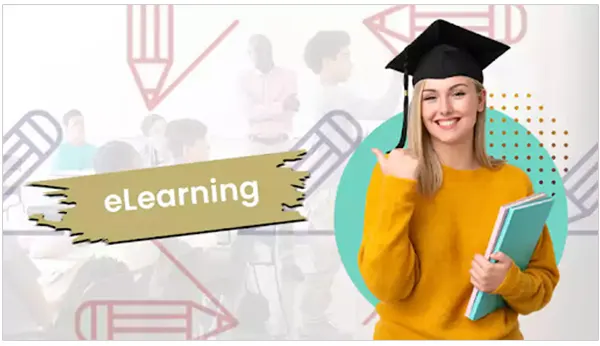
As there are several opportunities for learning all you need with just one click, more and more individuals are taking advantage of the convenience of online education. It is understandable why there is such a high demand for various types of eLearning software.
Make sure the concept is original if you want your online education software to stand out from the crowd.
If you do decide to enter this market and launch your own online learning platform, though, have a look at the guide below.
Here, we’ve compiled the top factors you should consider when creating your eLearning software.
E-Learning Platform Characteristics
The basic functionalities are the same regardless of the kind of e-learning platform you use. These functions must be included by an education software development company for the website to function effectively when creating an MVP for a learning platform.
But you should focus on cutting-edge features if you want to be a dominant force in the industry. The features and customer service of your product have a direct impact on their choice.
- Logging in as a registered user with a personal, editable profile is possible thanks to authentication and user profiles.
- Using a convenient search tool and a price, rating, or study time filter is called filtering.
- Students and instructors can see the dashboard, which displays various course-related data, including student ratings, traffic, earnings, and progress.
- Course page: When you access the course page, it should have a description of the course, details on the instructor, a list of the required readings, videos, podcasts, chats, and possibly even gamification components.
- Teachers can alter the course structure and content using the editing page, a course-building tool.
- Payment offers teachers a way to collect their wages while giving students easy payment options.

Steps to Build eLearning Software?
Produce a Proof-of-Concept
The market for online learning was valued at 165.36 billion dollars in 2016 and is expected to reach 243 billion dollars by 2021.
To ensure that the software development team has a complete and clear project vision and that business stakeholders are aware of what to anticipate in terms of budget, time, and outcomes.
It is necessary to conduct requirements analysis, detailed specification, learner needs, and goals analysis, and success criteria.
Description of Software Solution
Create a format for your e-learning program. The structure of an eLearning platform might vary. You can create classes that students can enroll in or create software that is test-based and has MCQ-style questions on various subjects.
Deciding on a Business Model
Prior to choosing the development approach, a business model must be selected. This business model will dictate how your learning platform will generate revenue. Below are a handful of the most typical business models.
- Subscription-based – In this type of business structure, customers pay a monthly or annual fee in exchange for unlimited access to the website’s courses or other content.
- Affiliate Model – With this business model, the courses can also include integrated affiliate links. These users can distribute to advertise the courses. Also, they can receive a commission each time a user joins the platform through one of their connections.
- Paid Certificates – With this business plan, you can also provide certificates to users when they complete the courses. It has been noted that users pay for a certificate that has been platform-verified.
- Corporate Partnership – With this business strategy, you may collaborate with organizations to provide specialized training programs and charge them accordingly.
- Paid Courses – You can offer paid courses using this business strategy. Also, the instructor and the website owner receive payment from students who purchase any course.
DID YOU KNOW? According to a study done by Paper Owl, eLearning Courses Can Be Completed 60%Faster Than In-Person Courses
Get Better
Starting with the fundamental elements allows for eventual additions and modifications after you have a better understanding of what your target market actually needs.
The key to creating a successful platform is to constantly experiment with new concepts and features that can both address specific issues and enhance the user experience.
As you recognize that changes are required along the route, don’t be hesitant to make them.
You must adapt, especially in these uncharted times with COVID-19 on the loose.
Maintain the value of your goods in a cutthroat industry, make an effort to satisfy fresh demands, and never stop improving.
Conclusion
A tremendous opportunity for businesses to create their own solutions is the continuously expanding demand.
Remember that in such a highly competitive industry, your solution must satisfy user expectations and provide a teaching opportunity. Study your market more closely.
Frequently Asked Questions
Ans: It is a digital tool that helps companies manage employee development and training. Managing and designing personalized courses for your company is made easier with the aid of e-learning software.
Ans: These educational applications support gamification, digital recording, virtual learning, content creation, and many other features. Learners can access the classroom from anywhere with the great flexibility that eLearning offers. Students can also access the study materials whenever it is convenient for them.







